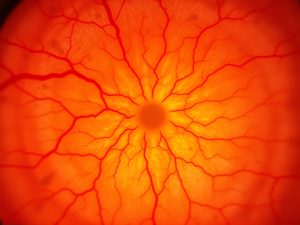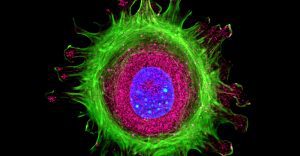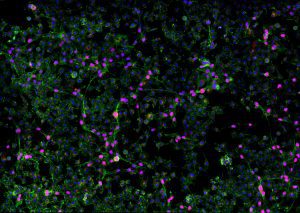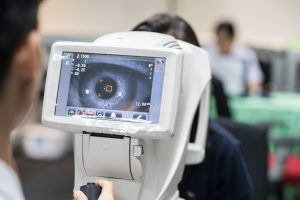Biomedical Optics
Biomedical optics is a rapidly evolving field that applies the principles of optics and photonics to the study, diagnosis, and treatment of biological tissues and medical conditions. By harnessing the power of light, biomedical optics enables non-invasive or minimally invasive methods to probe, image, and manipulate cells and tissues at both macroscopic and microscopic scales.
What is Biomedical Optics?
Biomedical optics leverages light–tissue interactions for clinical and research applications. This includes reflection, absorption, scattering, fluorescence, and photoacoustic effects. Engineers in biomedical optics design and optimize instruments to maximize signal quality, imaging depth, spatial resolution, and specificity. They often work at the intersection of optics, electronics, software, and biomedicine.
Key Applications for Biomedical Optics
Optical Imaging Systems
Biomedical imaging relies heavily on advanced optical design to achieve high-resolution, contrast-rich visualization of tissues. Key imaging methods include:
- Optical Coherence Tomography (OCT): A versatile imaging technique that requires broadband light sources (e.g., SLDs), interferometric detection, and dispersion compensation. Axial resolution is determined by coherence length, while lateral resolution depends on focusing optics.
- Fluorescence Imaging: An imaging method that depends on the fluorescent properties of key materials. It demands careful management of excitation and emission wavelengths using dichroic filters and multiband optical coatings.
- Multiphoton Microscopy: A specialized microscopy technique that employs femtosecond lasers and high-NA objectives. Dispersion management and power optimization are crucial for minimizing photodamage.
- Photoacoustic Microscopy (PAM): An imaging method that utilizes pulsed laser excitation (typically in the visible or near-infrared range) and ultrasonic transducers to detect photoacoustic signals generated by optical absorption. Axial resolution is governed by the bandwidth of the ultrasound detector, while lateral resolution depends on the optical focusing system.
-Biomedical-optics-300x188.jpeg)

Therapeutic Systems
Laser-based therapeutic systems require precision beam shaping, targeting, and delivery. These therapeutic systems typically require AI-driven software for analysis and decision-making. At Avantier, we offer hardware-based products that power therapeutic systems. These include optical systems for:
- Laser Surgery and Ablation: Design of these systems involves selection of wavelength based on tissue absorption, optical fibers for beam delivery, and real-time monitoring systems.
- Photodynamic Therapy (PDT): Manufacturing a PDT system involves designing light delivery systems for uniform tissue illumination, especially within constrained geometries (e.g., endoscopic probes).
- Low-Level Laser Therapy (LLLT): For LLLT, Engineers focus on optimizing output power, wavelength, and exposure time to trigger biological responses.
Diagnostic and Monitoring Tools
Diagnostic systems often demand compact, robust, and sensitive optical designs suitable for clinical environments. Examples include:
- Spectroscopic Systems: Require high spectral resolution, calibration stability, and sensitivity across visible to NIR ranges.
- Pulse Oximeters: Use LEDs and photodiodes optimized for red and IR wavelengths; signal processing compensates for motion artifacts and ambient light.
- Fiber Optic Biosensors: Include functionalized waveguides or evanescent field sensors with interrogation optics for label-free detection.
Microscopy and Research Tools
Microscopy platforms are often modular, and demand custom optics for high performance.
- Super-Resolution Microscopy (e.g., STED, PALM/STORM): Pushes optical limits with precision alignment, active feedback control, and phase modulation.
- Light Sheet Microscopy: Requires orthogonal illumination and detection paths; engineers focus on optical sectioning, scanning mechanisms, and minimizing shadowing.
High Precision Optical Components in Biomedical Systems
Lenses and Objectives
Custom and commercial microscope objectives with high numerical aperture (NA), aberration correction for biological samples (e.g., water or oil immersion), and fluorescence optimization.
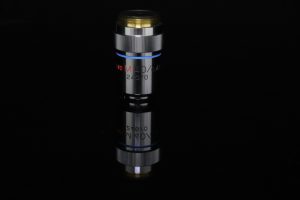
Mirrors and Beam Steering
Dielectric mirrors, galvo mirrors, and MEMS-based scanning systems for use in OCT and laser scanning systems.

Filters and Beamsplitters
High-performance interference filters (narrow bandpass, dichroic, longpass/shortpass) designed for biomedical use.
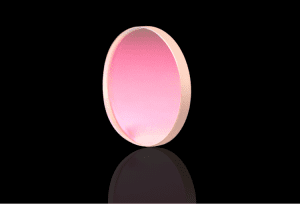
Laser Sources
Single-mode diode lasers, ultrafast pulsed lasers, and tunable supercontinuum sources may be integrated depending on application requirements.
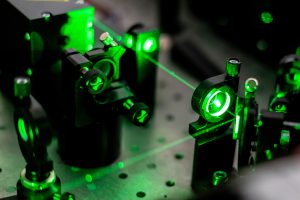
Optical Fibers and Probes
Multimode or single-mode fibers, gradient-index (GRIN) lenses, and fiber bundles are used in minimally invasive imaging and therapy systems.

Detectors and Cameras
sCMOS, EMCCD, and APD detectors are selected based on sensitivity, dynamic range, and frame rate requirements. Cooling, noise suppression, and integration interfaces should be considered in integration.
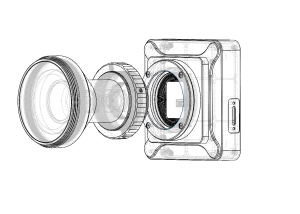
Engineering Challenges and Opportunities
Two key engineering challenges we face when designing optics for biomedical applications are miniaturization and multimodality.
- Miniaturization: Demand for portable or wearable devices calls for compact optical designs with high tolerance to misalignment and thermal drift.
- Multimodality: Integration of optical systems with ultrasound, MRI, or AI-driven analytics creates opportunities for hybrid diagnostics.
Advanced manufacturing techniques and attention to multi-modality at the design stage enable us to turn these challenges into opportunities to produce ultra precise, high-performance biomedical optics.
Optics for Biomedical Applications
At Avantier, we specialize in developing advanced optical systems engineered specifically for biomedical applications. Our design team excels at creating precise, reliable solutions that meet strict performance and regulatory requirements—without the extended lead times common in the industry.
With in-house manufacturing capabilities and a reputation for excellence, we deliver high-quality medical optics at competitive prices. All components are produced under ISO 9001 and ISO 13485 standards and undergo thorough quality inspection to ensure they meet the demands of biomedical research, diagnostics, and clinical use. To explore how we can support your next biomedical optics project or to request a quote, please contact us.
Related Content
WE CAN HELP YOU!
Contact us NOW for sales & expert advice.


